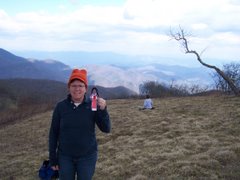by Tawnya Finney, TTEC Alumni
“The Trail to Every Classroom” coined TTEC was launched in 2006 as an initiative to connect teachers and students to placed-based service learning on the Appalachian Trail. I participated in the TTEC program in 2008 and recently participated in TTECwork this past summer. These classes and workshops have been a valuable contribution to activities and strategies that I use in my classroom and with my Appalachian Trail Club at school. However, I believe that as we utilize the lessons and activities that TTEC provides to us, we need to periodically reassess our definition of “classroom.”
I am sure that many teachers have experienced newly defined terms of classrooms over the past several years. With the evolution of our physical classrooms and the expectations for our classrooms, I have had to be flexible with my approach to sharing the Appalachian Trail with my students. This brings me to the questions “What is my classroom?” “Is it the space within the four walls of my school?” When I search for the definition of “classroom” on the web, I turn up several results. Merriam-Webster defines classroom as “a room where classes are taught in a school, college, or university.” One of the definitions of Dictionary.com states that a classroom is “any place where one learns or gains experience.”
This past year has been a flurry of activity in my local town of Waynesboro, PA. We were officially designated as an Appalachian Trail Community in April. With that designation came the responsibility and commitment to promote the Trail and educate our community. Since the official designation our steering committee (made up of community members, business members, municipal employees, PATC members, and teachers) has had a busy year. Our biggest focus this year has been a presence at many local festivals. We have our 15’ long map of the Appalachian Trail (provided by TTEC) that we display, as well as brochures, and coloring pages and AT tattoos for children.
While at these festivals, I have become increasingly aware that my classroom is not just the four walls in my school building. My classroom is also my community. As we speak with visitors, we get many questions about the Appalachian Trail including “How do I know that I’m on the Trail?” Wow! It really does get that basic. Many people in our local communities haven’t hiked on the Appalachian Trail, don’t realize that it is a National Park, and are timid about getting out on the Trail on their own. People won’t care if they don’t know or don’t experience.
I propose that not only do we need to connect the Trail to our classrooms in school but also to our communal classroom: offer a monthly hike; build a Facebook page and invite your community to “like” it; set up a small table at your local town festivals; ask your local library to host an Appalachian Trail talk night. When people become connected to the Trail, it’s amazing the stories that you hear and the excitement that is generated. When people become excited about the Trail, they also become passionate. The knowledge and passion that is generated from community activities will be what protects our Trail and what we teach our young students for years to come. When defining my classroom, I believe that I must go back to the definition of “any place where one learns or gains experience.” Students of all ages should be able to learn and gain experience when it comes to the Appalachian Trail classroom and all of its resources.

